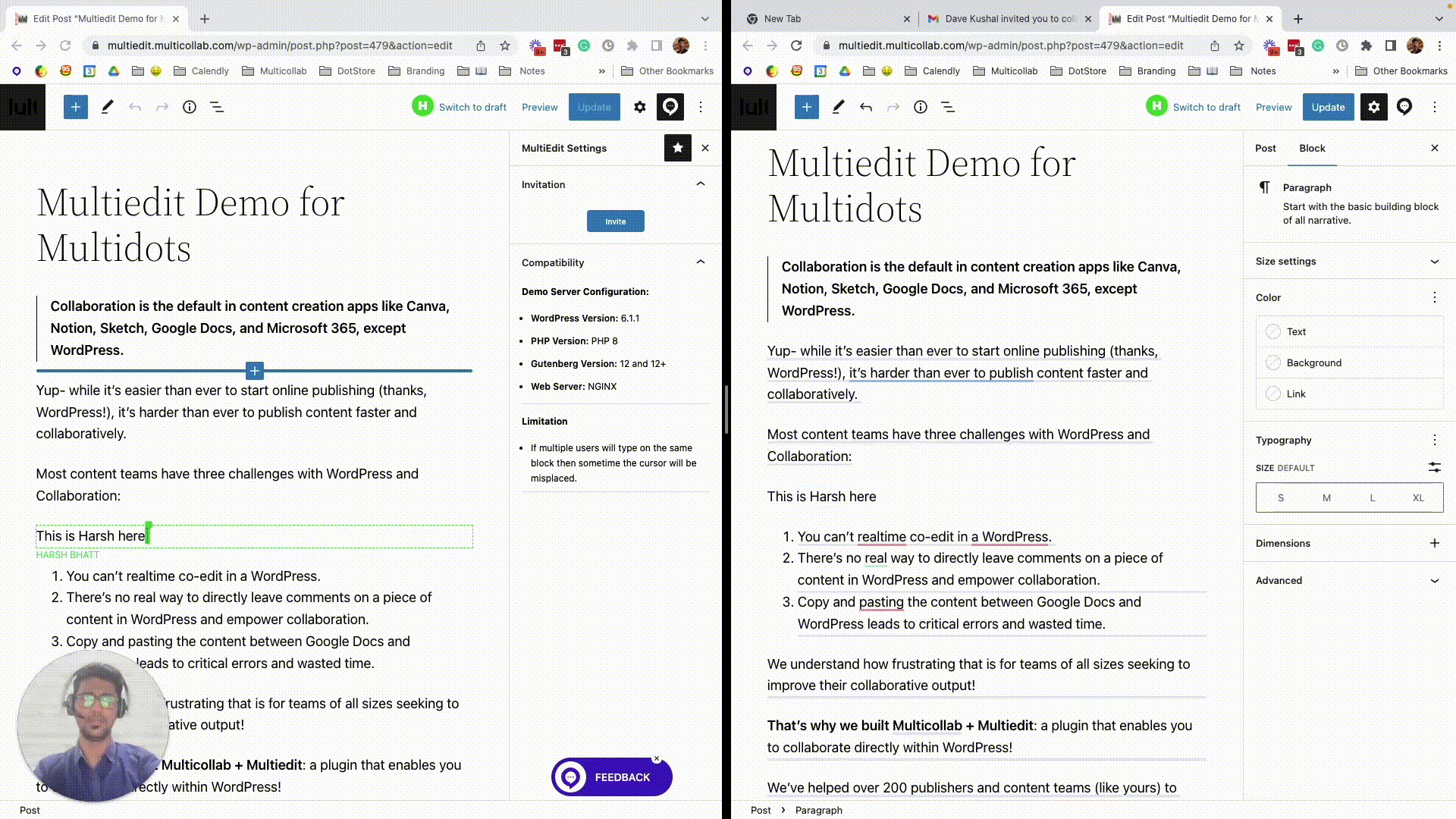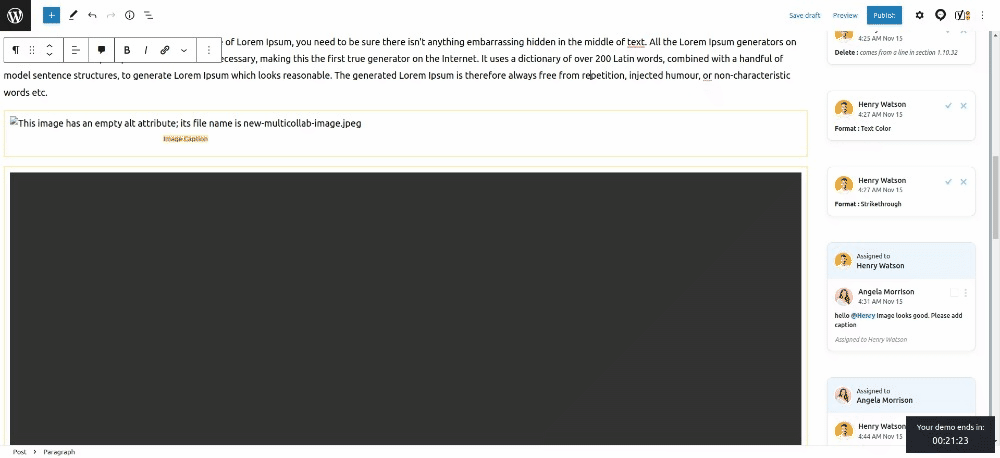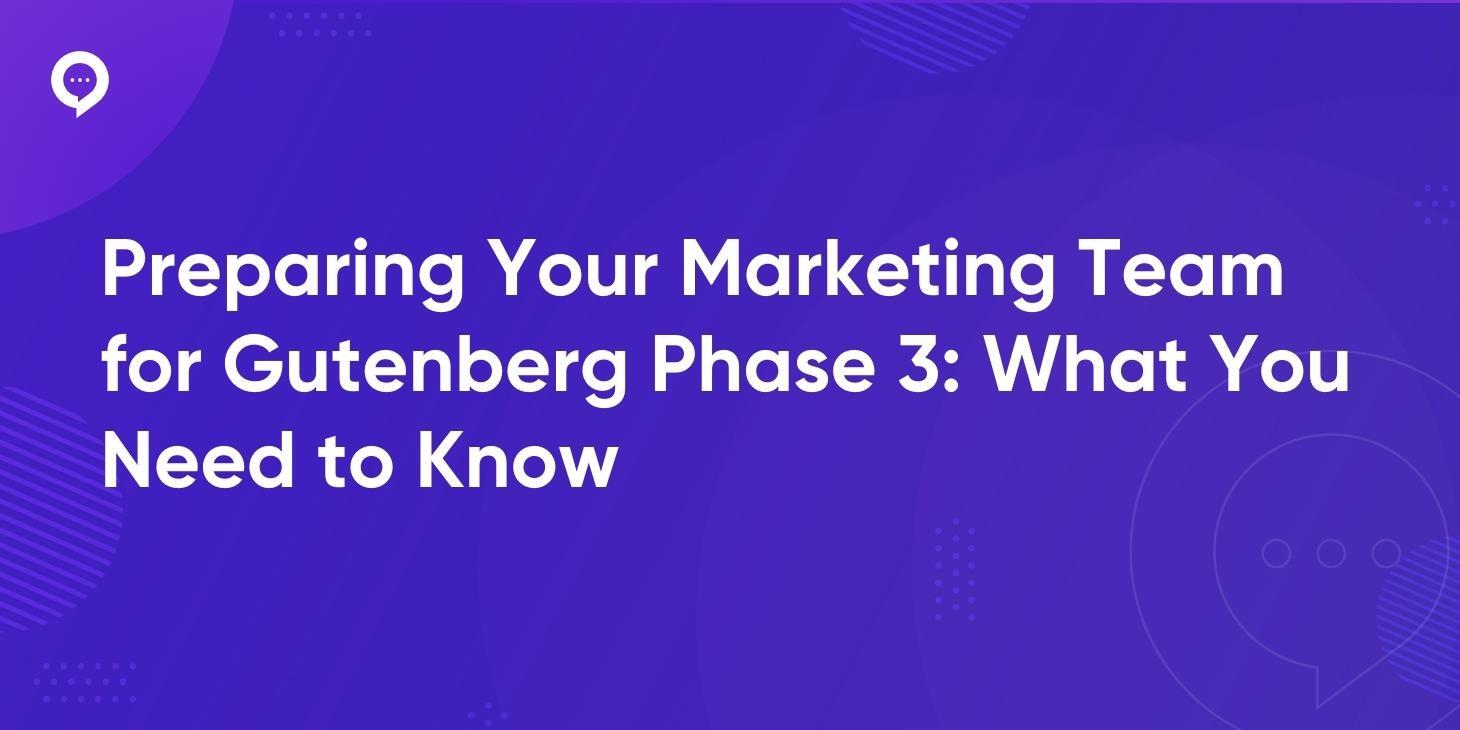Table of Contents
With Gutenberg Phase 3 on the horizon, it’s time to prepare your marketing team for the wave of changes that are set to revolutionize WordPress content creation and collaboration. This phase aims to introduce a full site editing system within the native WordPress environment, eliminating the need for external tools and optimizing the content creation process.
Traditionally, the workflow of a WordPress content development team typically involves juggling between various tools.
Drafts are created in Google Docs or similar third-party apps, shared with collaborators, suggestions are added, and revisions are made. Afterward, the content is transferred to WordPress, resulting in a back-and-forth review cycle that’s both time-consuming and disruptive.
The issue is exacerbated when we consider the potential security risks and the added costs of maintaining multiple subscriptions.
But what if you could do everything right inside WordPress?
It’s the question Gutenberg Phase 3 seeks to answer and it’s becoming a priority for WordPress marketing teams.
In this article, let’s delve into what Gutenberg Phase 3 means for your marketing operations, its potential impact, and how to efficiently transition your team to harness its advantages.
Understanding Gutenberg Phase 3
As we prepare for the rollout of Gutenberg Phase 3, it’s important to comprehend the features it brings and how they differ from traditional document collaboration tools. The focus of this phase is to turn the Gutenberg Editor into a powerful real-time collaboration hub, much like Google Docs, but within the native WordPress environment.
Diving straight into Gutenberg Phase 3’s core features, the introduction of real-time collaboration in WordPress stands out. Picture this: team members from various locations simultaneously working on the same post or page, akin to the familiar co-editing experience offered by Google Docs, but this time it’s happening within your WordPress environment.
As team members apply their edits, changes are synchronized and reflected instantaneously, meaning the days of sharing countless revised drafts are over. Consequently, this accelerates the content creation process and eliminates unnecessary delays, bringing a new level of efficiency to your workflow.
Additionally, Phase 3 introduces inline commenting. Team members can add comments directly in the Gutenberg Editor without the need for an external tool. These comments can be linked to specific blocks of content, making the feedback process precise and context-specific.
The feature also includes the ability to tag team members in comments, thus ensuring that the right people are notified about the relevant discussions.
In comparison, while Google Docs and Microsoft Office 365 offer real-time collaboration and commenting, their integration with WordPress is not as seamless. Content created on these platforms needs to be manually transferred to WordPress, a step that Gutenberg Phase 3 eliminates.
The inline commenting feature of Gutenberg Phase 3 also beats traditional commenting and suggestion features of Google Docs or Office 365, as it allows comments to be directly associated with the respective WordPress blocks, providing a more streamlined and contextual feedback process.
The Impact of Gutenberg Phase 3 on Your Marketing Ops
The advent of Gutenberg Phase 3 is poised to be a game-changer in the realm of your marketing operations. Here’s how it alters the landscape:
Firstly, the era of dependence on third-party document collaboration tools like Google Docs will see its decline. With Gutenberg Phase 3, your team can now create, edit, and review WordPress content all within the same platform.
This not only simplifies the workflow but also eliminates the need for tedious transfer of content between platforms, which often leads to formatting errors and miscommunication.
Secondly, the review cycle experiences a notable acceleration. Previously, you may have needed to schedule video calls or send extensive emails to exchange feedback on multimedia and dynamic content. Now, you can review these content types directly within the Gutenberg Editor, streamlining communication and facilitating faster feedback exchange.
No more chasing after people for approvals or worrying about missed feedback.
Thirdly, your organizational data security receives an unprecedented upgrade. In the past, during the review phase, external teams had access to your files, opening potential doors for data theft or corruption. With Gutenberg Phase 3, the risk is significantly mitigated as reviews and edits take place directly within your WordPress environment.
External stakeholders can contribute their feedback without being given unrestricted access to sensitive organizational data.
Lastly, your entire WordPress content creation workflow is streamlined with Gutenberg Phase 3. The need for multiple tools is significantly reduced, promoting more direct and efficient communication between team members.
This can foster better collaboration, improve the speed of content production, and ultimately enhance the quality of the output, boosting your marketing efforts.
How to Prepare Your Marketing Team for Gutenberg Phase 3
Transitioning to a new system can seem daunting, but with careful planning, your marketing team can make the most out of Gutenberg Phase 3. Here’s a roadmap to guide you through this transition:
- Avoid an abrupt transition to the Gutenberg Editor: Introduce it to your team gradually, starting by utilizing it for content review. This approach allows your team to familiarize themselves with the new system in a familiar context before moving on to more complex tasks like content creation.
It’s important to make the transition gradual to minimize resistance and ensure a smoother learning curve. - Maintain an open channel for feedback: Regularly ask your team about their experience with the new system and adjust your approach based on their input. This encourages team members to express their concerns or share their insights, creating an environment of shared learning and growth.
Besides, constant adjustment ensures that your transition plan stays effective and relevant to the actual needs of your team. - Consider running a few ‘test’ projects using the Gutenberg Editor: Create and edit a few articles entirely within the new system. This allows your team to gain first-hand experience and make a tangible comparison between the old and new workflows.
The practical hands-on experience helps the team appreciate the benefits of Gutenberg Phase 3 and fosters a sense of familiarity and competence with the new tool. - Keep an eye on how other teams are utilizing Gutenberg Phase 3: WordPress communities are a goldmine of information where various teams share their experiences, ideas, and solutions. Participating in these discussions can provide valuable insights into best practices and potential pitfalls to avoid.
Observing others’ experiences also offers a broader perspective on the possibilities of Gutenberg Phase 3, thereby enabling your team to optimize its usage to suit your unique needs.
Get Gutenberg Phase 3 today
Before Gutenberg Phase 3 is officially released, WordPress content teams will continue to grapple with the inefficiencies of the current workflow.
These traditional workflows often lead to slower content production, inflated costs, and even compromise content quality due to the constant back-and-forth between multiple tools. But there’s a way to overcome these challenges today.
Enter Multicollab. Here’s how the WordPress collaboration plugin transforms your workflow:
- Co-editing in real-time: Just as you would in Google Docs, Multicollab offers you the ability to co-edit in real-time. This means multiple team members can work on a post or a page simultaneously, reducing the time spent on sharing and reviewing multiple versions of the document.

- Multimedia and dynamic content review: With Multicollab, there’s no need to rely on video calls or other platforms to review multimedia and dynamic content. Its integrated interface allows your team to leave comments directly on images, videos, and other dynamic content (such as image carousels), right within the WordPress editor.

- Streamlined workflow: Multicollab eliminates the need for multiple tools in your content creation process, streamlining your workflow. This can significantly reduce the learning curve for your team and increase their overall efficiency.
- Time-saving process: Because Multicollab integrates the editing and reviewing process into a single platform, there’s no need for constant back and forth between different platforms. This significantly speeds up your content creation process.
- Secure data collaboration: Multicollab ensures your organizational data remains secure by allowing reviews and feedback to be exchanged directly within the WordPress editor. There’s no need to give external teams unrestricted access to your internal files, minimizing the risk of data theft or corruption.
Don’t wait for the future; embrace it today. Make your content creation process more efficient, collaborative, and secure with Multicollab.
FAQs:
1. What is Gutenberg Phase 3 and why is it important?
Gutenberg Phase 3 is an upcoming update to WordPress’s Gutenberg Editor. It aims to facilitate real-time collaboration, inline commenting, and user tagging, essentially making content creation more efficient and streamlined for teams.
2. How does Multicollab enhance WordPress content creation?
Multicollab brings real-time collaboration to WordPress. It features inline commenting, multimedia feedback, and a streamlined workflow, eliminating the need for multiple tools and enhancing data security.
3. How can my team prepare for Gutenberg Phase 3?
Start by introducing Gutenberg to your workflow gradually, soliciting regular feedback from your team, running test projects, and keeping an eye on how other teams are using Gutenberg with Phase 3.







